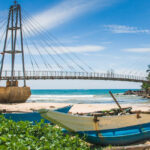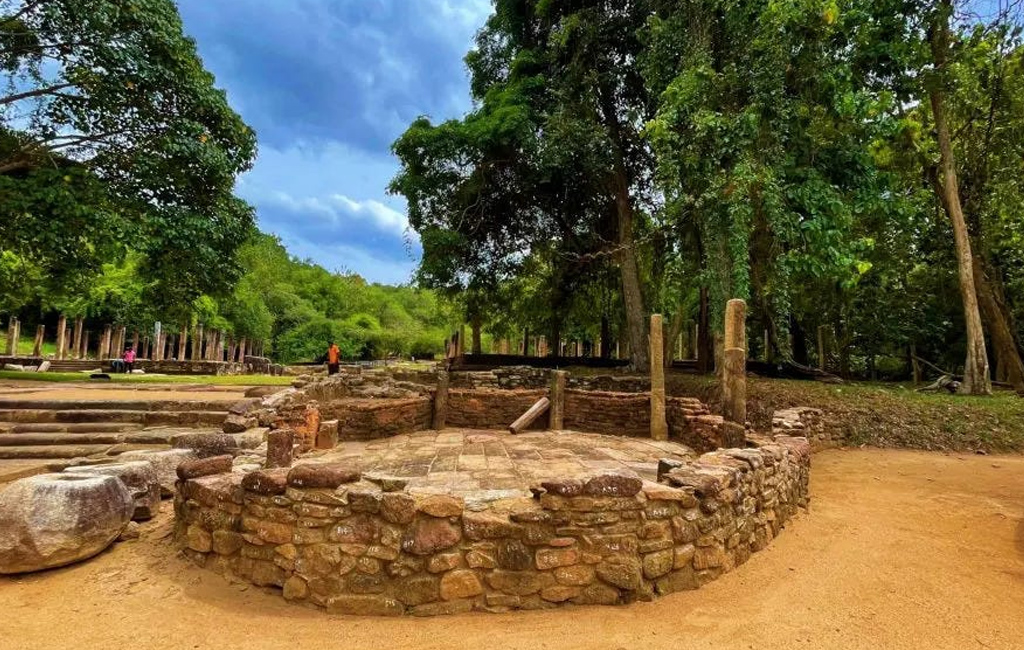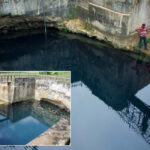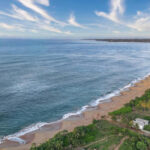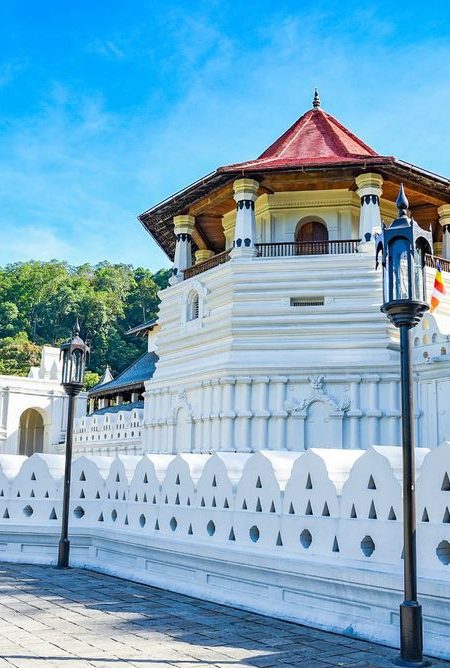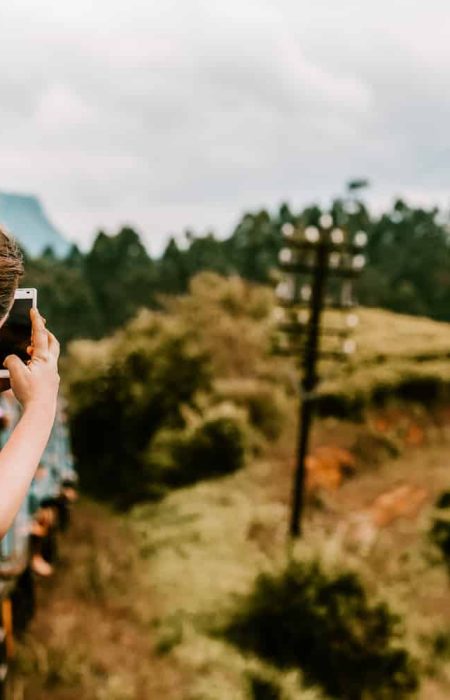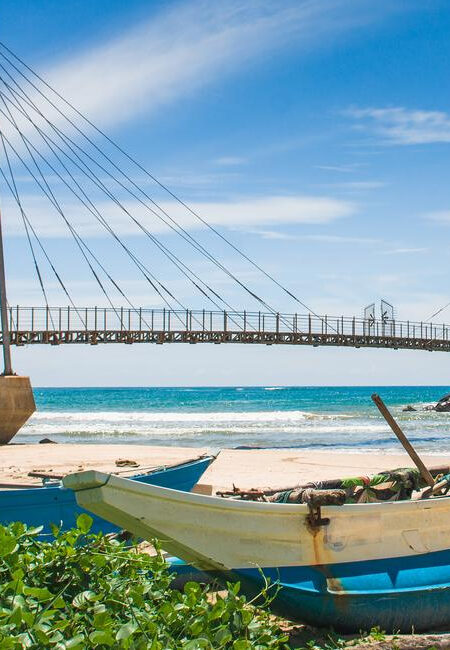Lanka is a world famous for its immense cultural heritage, attractive landscapes and ancient Buddhist monuments. Most travel itineraries will highlight cities such as Colombo, Kandy and Anuradhapura but there are lesser known areas which are equally exciting for the curious traveler. Rajagala in the Eastern Province of Sri Lanka, through the Ampara district is one such hidden gem. This site is a peaceful haven, not only for those who want to reconnect with Sri Lanka’s ancient past, but also for an important archaeological treasure.
In this article we’re going to discover the beauty and history of Rajagala and why it should be on your list when you travel to Sri Lanka.
A Brief Overview of Ampara
Sri Lanka’s Eastern Province currently has a district called Ampara, where rice cultivation is a main occupation, as well as cultivation of various other agricultural products. Situated some 350 kilometres from Colombo, Ampara is a tantalising combination of natural beauty, rich wildlife and important historical sites. With not having been so explored by mainstream tourism the district has some of Sri Lanka’s most fascinating landscapes and cultural landmarks, and one of the prime attractions is Rajagala.
Ampara has its share of ancient Sri Lankan history. Once a part of the Ruhunu Kingdom, the region played an important part in the country’s history and there are many archaeological sites around the region that prove this. It is also a district of a diverse population, which is Buddhist, Hindu, and Islamic in parts.
Rajagala: An Archaeological Marvel
An ancient Buddhist monastic site, the Sinhala name Rajagala, or Rajagala Kanda (Rajagala Hill), is located near the town of Uhana in the Ampara district. More than 2,000 years old, it was a bustling Buddhist monastery. Now it is one of the main archaeological sites in Sri Lanka but still not very well known among tourists.
History of Rajagala
Rajagala’s origins are to be traced to the 2nd century BCE, in early Sri Lanka’s Buddhist history. It is thought that this area was donated to a Buddhist monks by King Lajjatissa, ruler of the Anuradhapura Kingdom to establish a monastery. The site soon proved popular and became a major centre for Buddhist learning and meditation.
Through the centuries, the monastery at Rajagla built many stupas, inscriptions and other buildings in its monastic remains, which continued to expand. Arhat monks were highly revered in Buddhist traditions for achievement of enlightenment, who were centered at the site. These tie ins with enlightened monks lend spiritual weight to the site and draw the pilgrim and history buff there to visit.
Rajagala means ‘King’s Rock’, a reference to the royal gifts it received when the site was flourishing. Like many other ancient sites in Sri Lanka, however, Rajagala could be abandoned and fall into obscurity, only to be rediscovered by 20th Century archaeology.
Archaeological Significance
Rajagala is crammed with ruins and valuable relics still coming to light. The site extends over an area of more than 1,025 acres, and is one of the largest and most important Buddhist monastic complexes in Sri Lanka.
Some of the key features of Rajagala include:
- Stupas: Built to enshrine the relics of the Buddha or important monks, these dome shaped structures were made. At Rajagala many stupas have been discovered, some of which have weathered the course of time and are in a state of ruin.
- Inscriptions: Many rock inscriptions are found on the site, some written in early Brahmi script. Their value lies in what they reveal of the history of the site, the monks who lived there and its patrons.
- Caves: The caves at Rajagala are noted to contain several rock caves, some of which were used as areas in retreat by the monks. Inscriptions, and drip-ledges, which were carved into the rock so that water didn’t enter the caves, can be found on some of these caves.
- Stone Carvings and Artifacts: The site has also yielded various stone carvings, pottery and other artifacts, according to archaeologists. These items show us what the monks did for them and the religious practices that were held at the monastery.
However much of Rajagala is unexplored, and ongoing excavation keeps revealing new finds. From a visitors perspective, exploring Rajagala offers a sense of adventure, as you walk through a site which is still giving up its ancient secrets.
Why Visit Rajagala?
Until Rajagala gains that kinda name recognition as Sigiriya or Polonnaruwa, it is something truly different, it carries something different to offer to these traveler who wants to be submerged more deep into the culture of Sri Lanka. Here are some reasons why Rajagala should be on your travel list:
- As a matter of fact-description of untouched beauty and tranquility.
- Unlike many other tourist sites, the site of Rajagala has not been quantumly touched by mass tourism. A serene and peaceful site, introspection should be peaceful, as well. There are no crowds and visitors can wander through the ruins in their own time. However, to find a more meditative, reflective experience than Rajagala provides, one would find themselves ideally alone.
- A quick look into Sri Lanka’s Ancient past.
- Rajagala gives us a great insight into the early years of Buddhism in Sri Lanka. The Huffington Post inside goes on to speak about why the ruins and artifacts you can find here provide such an opportunity to connect with the country’s ancient past. An extremely interesting place, whether you are a history enthusiast or who is just interested in Kandyan cultural heritage, Rajagala leaves its mark.
- Spiritual Significance
- Sharing Arhat monks background, Rajagala then has deep spiritual significance. At one time it was a place of meditation and enlightenment and many visitors today come to enjoy its peaceful atmosphere. Rajagala is a great place for Buddhism enthusiasts to do just this, to take the monks footsteps and also think about the Buddha’s teachings.
- Off-the-Beaten-Path Adventure
Rajagala offers an attractive back country option for travellers that like to explore less travelled paths. And because it is so remote, because there is ongoing archaeological work, it still has an air of mystery and discovery to it. Another option for those who can walk back to Bhuvanekabahini Bridge, and enjoy hiking in the forested areas around Rajagala Hill, is to explore the way.
How to Get to Rajagala
By Road
Ampara is about 35 kilometers away from the town of Rajagala. The site, however, can best be reached by road and it is possible either to drive oneself or to hire a car and driver. The distance between Colombo and Rajagala is around 6 – 7 hours by car but it also depends to traffic and road condition.
But for those who are coming from other parts of the Sri Lanka can also use buses going to Ampara from major Sri Lanka cities including Colombo, Kandy, and Batticaloa. Rajagala is accessible by tuk-tuk or taxi from Ampara.
By Public Transport
Rajagala doesn’t have many public transport options going to, but it can be reached by bus to Uhana or Padiyathalawa, and then local transport to the site. Though, this is the option for travelers who don’t mind a slower pace of travel – and are happy to master local transport systems.
Best Time to Visit Rajagala
Rajagala is best visited in the dry season, from May to September. This is a warm and dry time of year to explore the site without the threat of rain, or muddy trails. Visitors to Rajagala Hill can also enjoy panoramic vistas of the surrounding landscape from the top of the hill at Rajagala Hill is also a good place from which to enjoy clearer views as the dry season offers clearer views from the top of Rajagala Hill, where visitors can enjoy panoramic vistas of the surrounding landscape.
In the heat of the midday sun, visitors should try to arrive either really early in the morning or pretty late in the afternoon. As Sri Lanka has a tropical climate it can be hot and humid, and therefore make sure you bring plenty of water, wear comfortable clothing and use sun scream.
Tips for Exploring Rajagala
Wear comfortable shoes: There isn’t the extent of walking that entails at other sites, but this is a big site so you will be doing some walking so worthy footwear is a must!
Bring water and snacks: Because Rajagala has no shops or facilities, it’s a good idea to take your own water and snacks with you.
Hire a guide: Exploring Rajagala on your own is possible, but a local guide can really make your experience here better. A guide also can offer likely information on the history and importance of the site, which will help to better understand the context of the ruins, which inscriptions.
Respect the site: Also famous as an important historic and religious site, Rajagala which should be treated with respect. Do not climb or touch the ruins and be conscious of customs and traditions of local people.




